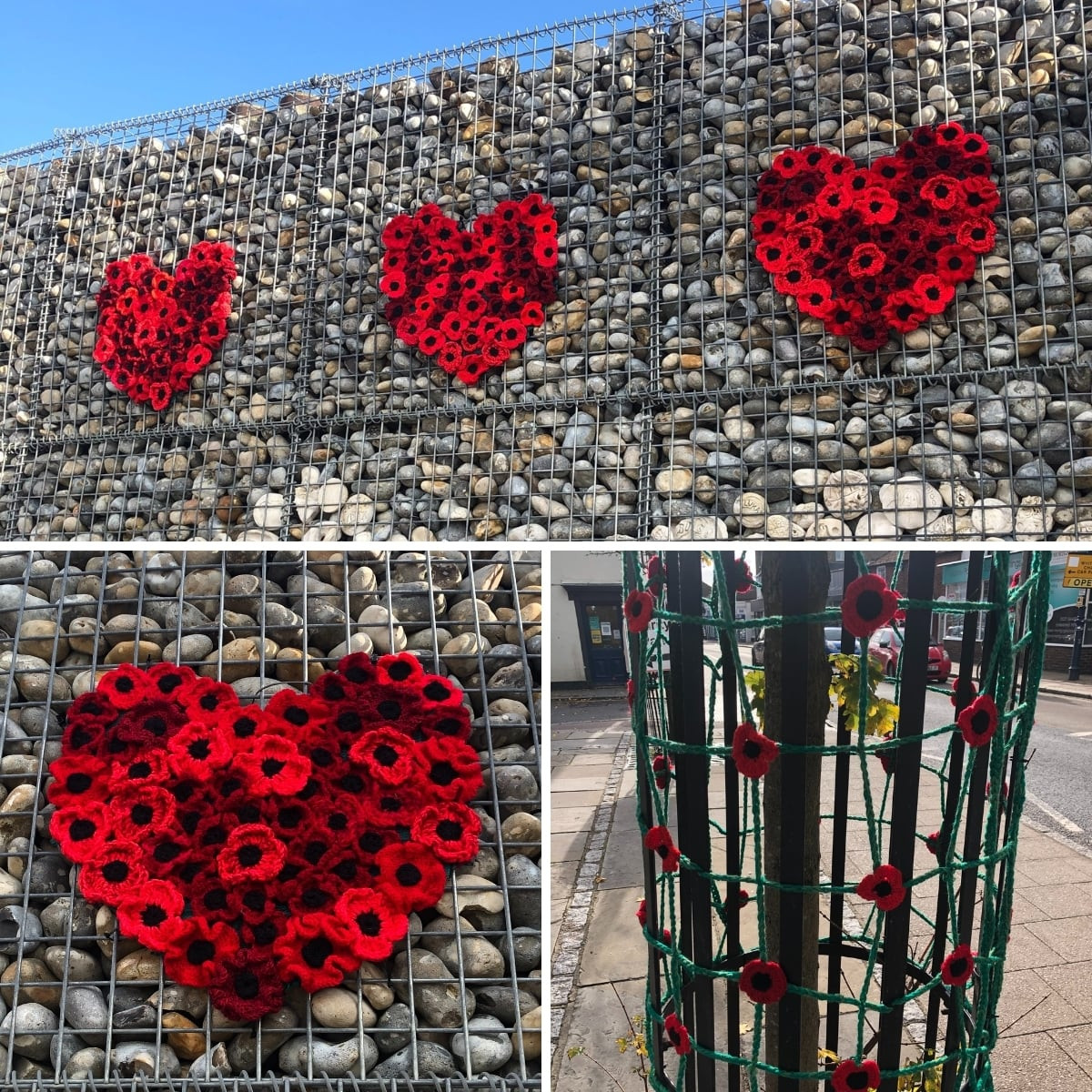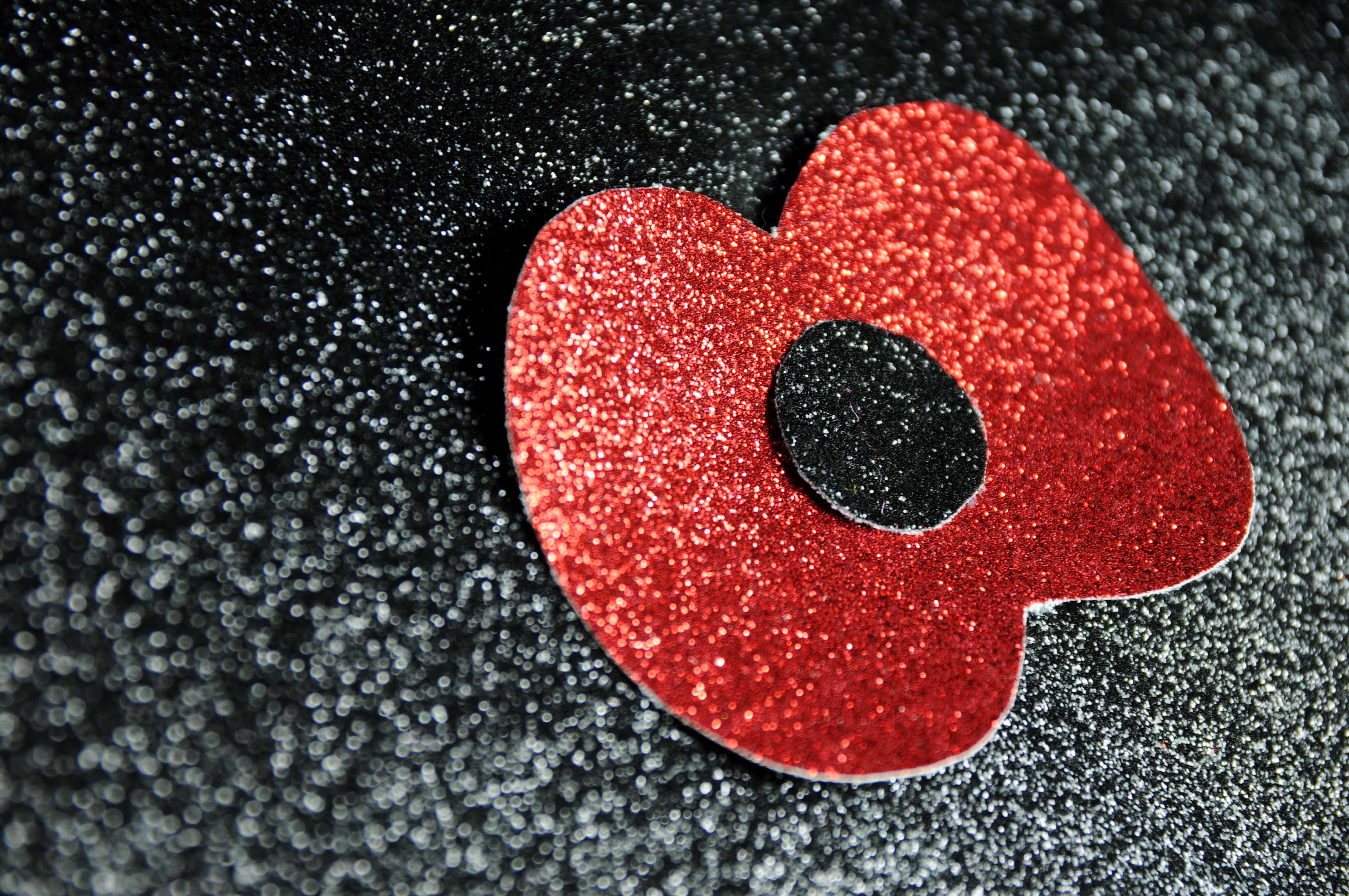
_04.jpg)

People from far and wide are fixing this meaningful accessory to their pets to spread the message to people they see walking down the street. The campaign is backed by a number of high-profile celebrities, including Paul O’Grady, David Essex O.B.E, Ben Fogle and Arlene Phillips C.B.E of Strictly Come Dancing. The Purple Poppy Campaign recently sold out of their accessories, but are continuing to sell mugs, key rings and phone cases – all products are made by unpaid volunteers who ‘encourage members of the public to come together to pay tribute to the many animals lost in Service, and to those who Serve us today’. ‘We encourage members of the public to come together to pay tribute to the many animals lost in Service, and to those who Serve us today’ – The Purple Poppy Campaign. They cost anywhere from £1- £30 and are made from a variety of materials, like hand-knitted wool, silver, gold and enamel, however the money from these is not donated to the Animal Aid Charity and so if you would like to make a donation, click here. Click here to purchase the purple paw.ĭue to this change of concept, the Animal Aid Charity do not sell these pins and so if you want to buy your own, you should look online on Amazon and Ebay. The Animal Aid Charity have created a new alternative badge, the purple paw badge, remembering the animals that have been lost due to human exploitation, covering but not restricted to, blood-sports, wars, horse racing and experimentation. The design was first created in 2006 but hasn’t become as well-known as the traditional red remembrance pins. Officially associated with the Animal Aid Charity, the badge has been designated to August 23, but can still be worn on November 11 to show respect. Messenger dogs travelling across war-torn land. This includes animals used in the war, like dogs and pigeons that carries messages, horses pulling carts and ammunition, as well as cats, canaries and mules. The purple poppy however, is the lesser known pin to remember animals that lost their lives during war. Red poppies are synonymous with the Royal British Legion and remembering those who fought and lost their lives during the First World War. and the future (how we will ensure our shared history of service and sacrifice is remembered) of Remembrance.Remembrance Sunday is fast approaching and millions of people up and down Britain will be seen wearing poppies, but you may also see purple poppies – so what do they mean? Brittany Tijou-Smith explains… What is the Purple Poppy?.present (what we do to honour those who serve to defend our democratic freedoms and way of life today),.past (how we have remembered since 1921),.A similar service is repeated up and down the country, and further afield, in churches and at war memorials around the world.įollowing the Two Minutes Silence wreaths of poppies are laid at the foot of the Cenotaph, starting with Her Majesty the Queen, now represented by Prince Charles, and then other members of the Royal Family, politicians and guests from other nations, and heads of the different branches of the Armed Forces.įor Remembrance 2021, the British Legion are looking at the:

To mark the end of the silence another single gun is fired, and trumpeters play the Last Post. It is also broadcast by the BBC across the country for people to watch at home.Īs Big Ben strikes 11 am a single gun is fired on Horse Guards Parade and the Two Minute Silence begins. His campaigning was successful, and the Act of Remembrance was developed into what we know it as today.Įach year there is a service at the Cenotaph attended by the Royal Family, politicians, military representatives, veterans and members of the public who gather in Whitehall on Remembrance Sunday – the second Sunday in November (or the closest Sunday to 11 November). He launched the British Poppy Day Appeal that year, using Gurin’s French flowers. In 1921, she met Field Marshal Earl Haig, founder of the British Legion. In 1921, Earl Haig, Commander-in-Chief of the Army during the First World War and founder of the British Legion, adopted the poppy as a symbol of Remembrance and announced that he wanted 11 November 1921 to be known as Remembrance Day – today we commemorate Remembrance Sunday and Armistice Day. It was two more years before the concept was picked up worldwide, thanks to a Frenchwoman, Anna Gurin, who made the seminal link between poppies and fundraising. Since the British Legion was formed in 1921, they have been the champions of Remembrance.


 0 kommentar(er)
0 kommentar(er)
